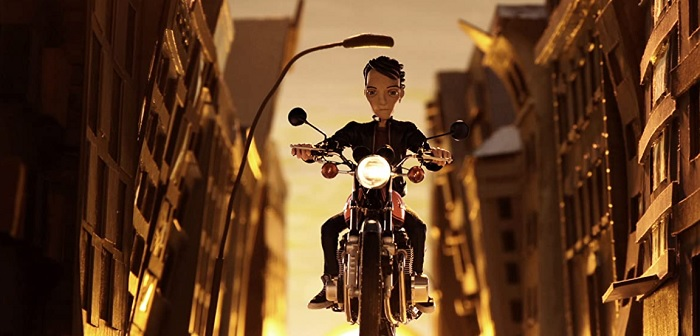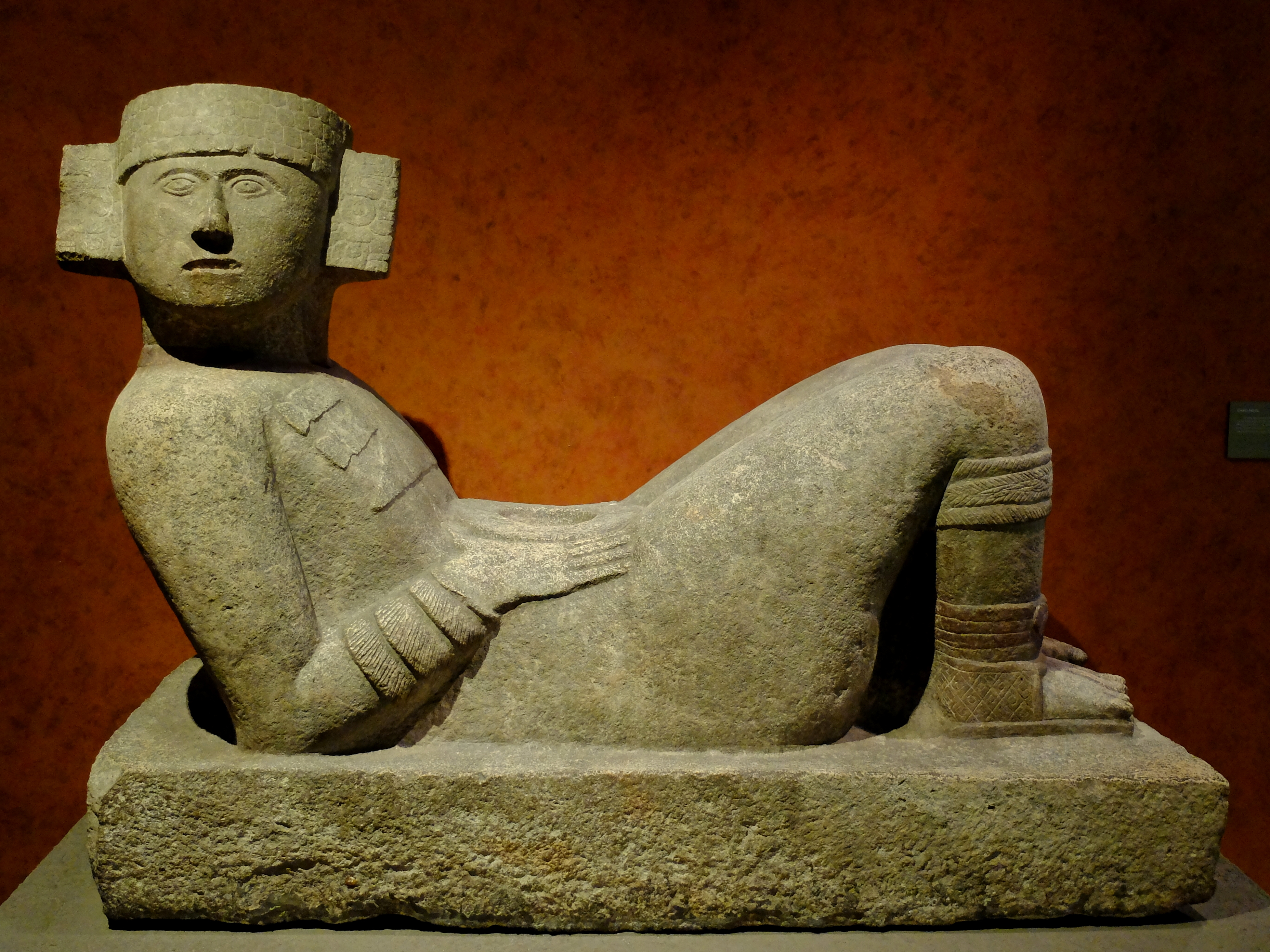7.5 "La noche boca arriba" – Julio Cortázar
6 min read•june 18, 2024
Kashvi Panjolia
AP Spanish Literature 💃🏽
24 resourcesSee Units
Summary
This story starts with a man leaving a hotel and riding his motorcycle through the streets of a city. As he enters a lavish neighborhood, he becomes more relaxed and doesn't notice the old woman who is crossing the street. He gets into an accident with the woman but manages to mostly avoid her. The man is seriously injured and is taken to a hospital.

Image courtesy of Twitter.
As he falls asleep, he has a vivid dream that he is in the jungle and is being chased by the Aztecs during a time of war. He is fearful and has crude accessories, like a stone dagger and a sash made of wool. As he makes a leap, he is suddenly awake in the hospital bed again. He drinks water and avoids going back to sleep, but succumbs to his fatigue after dinner.
He resumes his dream of running in the jungle and stops to listen for the enemy. Suddenly, he hears shouts and sees torches nearby. The enemy surrounds him, and he gets captured. He awakes once more in the hospital bed and looks at everything around him to avoid falling asleep, but sleep overtakes him once again.
In his dream, he is now lying on a stone slab with his hands and feet tied to it. He realizes he has been brought to the dungeons of the temple and starts screaming because he knows he is about to be sacrificed to the Aztec gods. He is lifted from the stone slab by the Aztec priests and taken through a narrow passageway. He wants to go back to the hospital bed and suddenly wakes up again. He is relieved to be awake, but every time he closes his eyes he is instantaneously transported to the narrow passageway and the priests.
He cannot fight his sleepiness for long, however, and is transported back to the passageway before he can even touch the water bottle he had reached for. He saw the sacrificer coming towards him with a stone knife and tried one last time to go back to the hospital bed, but he wasn't able to. He knew then that he was awake at this moment, and the strange city with lights that shone without fire and the giant metal insect that he rode on were just a dream.
Themes
El tiempo y el espacio: Cortázar plays with the concept of time and space in this story because the man left the hotel at 8:50 AM, then got into a motorcycle accident a little while later. He gets taken to the hospital and falls asleep around the afternoon, but in his dream, it's already nighttime. Also, the environment the man is in changes, but the events seem to happen at the same time intervals once the man starts to dream. A few hours spent in the hospital seems to equal a few hours in the jungle.
La construcción de realidad: The story starts in the modern world, and for almost the entire text, the reader is led to believe that the man is dreaming about running from the Aztecs. How else would he know about a motorcycle, a hotel, and a jeweler's shop, right? Well, this is where the story gets weird. In the end, the reader finds out that the man was actually living in tribal times and he was dreaming about the modern world with such detail. Cortázar purposefully structured the story this way to show how the human mind moves naturally between the realms of dream and reality. He also wanted to demonstrate how it can sometimes be difficult to distinguish between these two realms.

A terrible feeling. Image courtesy of Facebook.
Comparative Works
"La noche boca arriba" by Julio Cortázar can be compared to another required work, "Chac Mool" by Carlos Fuentes. In "Chac Mool," Filiberto's diary talks of a stone statue that slowly turns into a grotesque human once it has been found. In reality, we know this is not possible, just as it is not possible for the man in this story to dream in such detail about the modern world when he is actually living in tribal times.

The statue of Chac Mool. Image courtesy of Wikipedia.
Another similarity between these two short stories is they both have a plot twist at the end that deals with the concept of reality. In "La noche boca arriba," we find out that what we think is a dream is actually reality, and in "Chac Mool," (⚠️ spoiler alert!) we find out that the man who opened the door to Filiberto's house matched the description of Chac Mool's human form. This discovery made us wonder if maybe Filiberto wasn't so crazy after all, and if the statue had actually turned into a human.
One difference lies in the structure of the two stories. "Chac Mool" contains a diary entry as its alternate setting, while "La noche boca arriba" contains flashbacks to the alternate setting. The diary entry is told in its entirety only once during "Chac Mool," but there are multiple flashbacks and they are occurring at the same time as the original setting in this story.
Literary Terms
Ambiguëdad/Ambiguity -- the quality of being open to more than one interpretation; inexactness. Both the modern and primitive times were described so vividly that it was difficult to tell which was the dream and which was reality. During the story, the reader believed both were the reality at some point, so Cortázar made the settings ambiguous so the reader couldn't tell until the end.
Desdoblamiento/Splitting -- a literary technique that divides the protagonist into two personalities that live in two realities. The man's personality in the modern world is amicable since he was joking with the nurses and the guard, but in the time of the Aztecs, he was violent and afraid. 🎭
Flashback -- the man is having flashbacks to the other reality, which at first seems to be the chase in the jungle but then turns out to be the modern world.
Ambiente -- the environment is created through vibrant imagery and the use of the different senses. The jungle had a distinct smell about it, and the sunlight filtered through the tall buildings in the modern city. 🌇
Atmósfera/Atmosphere -- in the hospital, the atmosphere is relaxed and laid back since the man has nurses bringing him food and taking care of him. In the jungle, though, the atmosphere is one of alertness and fear since the man has to survive on his own and try to outsmart his enemies.
Sinestesia/Synesthesia -- a figure of speech in which one sense is described in terms of another. In this story, the author uses phrases like "una fragancia compuesta y oscura como la noche," which describes a smell in the jungle in terms of the darkness of the night, which uses the sense of sight. A smell is not actually dark like the night, but Cortázar could be using this phrase to say the smell was heavy or strong.
Suspenso/Suspense -- the author creates a sense of suspense by describing the man's emotions. The man was fearful during the chase in the jungle, and he prayed using his amulet for his safety. He screamed when he was tied to the stone slab because he was awaiting "del final inevitable" (the inevitable end), a phrase that foreshadows the end of the story. Through foreshadowing, sudden changes, the emotions of the man, and exaggerated language, Cortázar creates suspense in the story.
Browse Study Guides By Unit
🏇Unit 1 – La época medieval
🛳Unit 2 – El siglo XVI
🖌Unit 3 – El siglo XVII
🎨Unit 4 – La literatura romántica, realista y naturalista
🤺Unit 5 – La Generación del 98 y el Modernismo
🎭Unit 6 – Teatro y poesía del siglo XX
🌎Unit 7 – El Boom latinoamericano
🗣Unit 8 – Escritores contemporáneos de Estados Unidos, y España

Fiveable
Resources
© 2025 Fiveable Inc. All rights reserved.